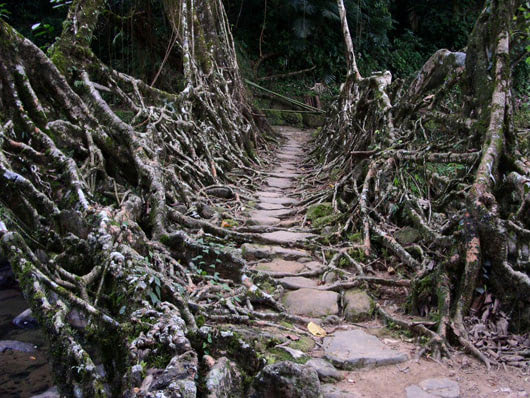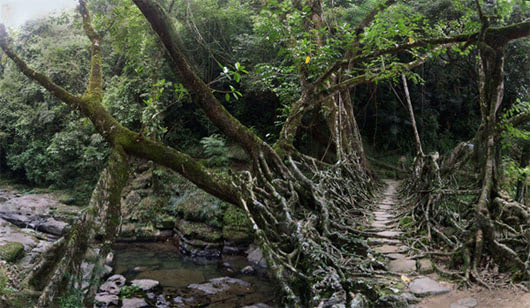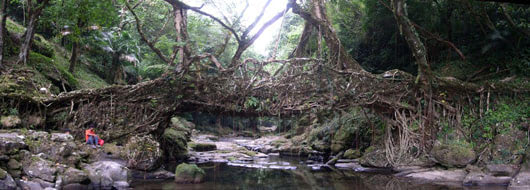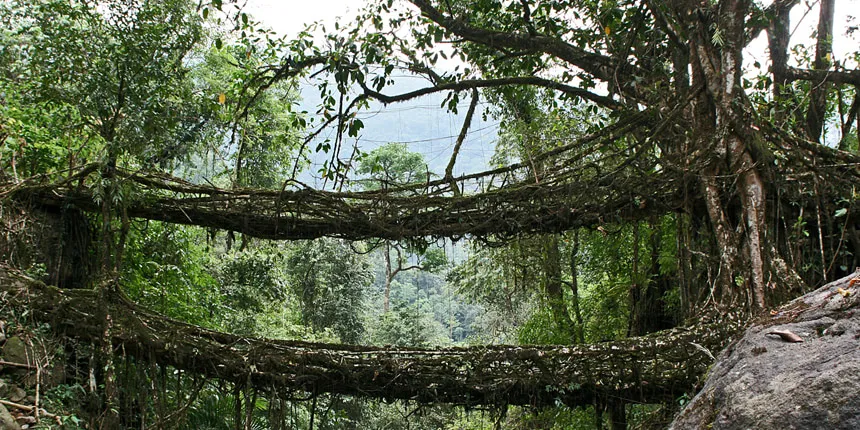In the depths of northeastern India, one of the wettest places on earth, bridges aren't built – they're grown. What could 21th century architects learn from these dynamic construction principles? I would like to see this applied on highways.

The living bridges of Cherrapunji, India are made from the roots of the Ficus elastica tree. This tree produces a series of secondary roots from higher up its trunk and can comfortably perch atop huge boulders along the riverbanks, or even in the middle of the rivers themselves.
In order to make a rubber tree's roots grow in the right direction - say, over a river - the Khasis use betel nut trunks, sliced down the middle and hollowed out, to create root-guidance systems.
The thin, tender roots of the rubber tree, prevented from fanning out by the betel nut trunks, grow straight out. When they reach the other side of the river, they're allowed to take root in the soil. Given enough time, a sturdy, living bridge is produced.


Via Living Root Bridges, via Makezine.


Comments (0)
Share your thoughts and join the technology debate!
No comments yet
Be the first to share your thoughts!